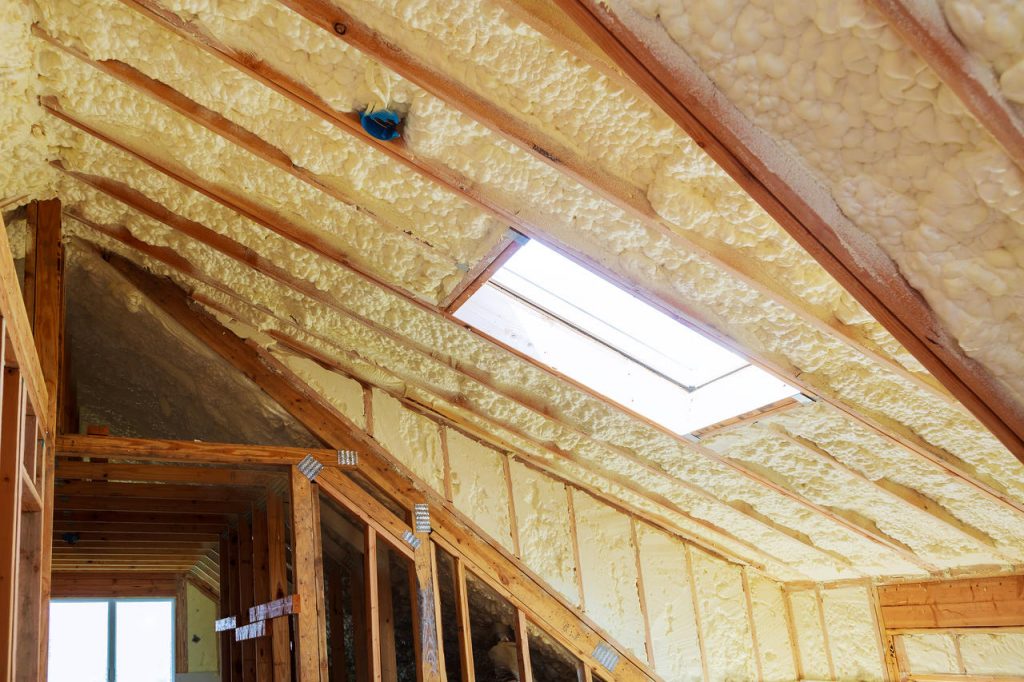Many detached houses need insulation of the attic because it is used as another room – it can be a bedroom or an office. Its insulation is very important, especially if you want to reduce the likelihood of dampness.
The most important thing is to choose the right materials that will prevent the formation of so-called thermal bridges. We can choose from several very popular materials: foamed polystyrene, mineral wool and polyurethane foam. Cost estimate of the insulation and its expected effectiveness can be determined by the company that will be engaged in insulating your building.
A very modern material for insulation, currently available on the market, is mineral wool, which has an additional layer of aluminum foil. The foil reflects heat back to the interior, which makes the house very energy efficient and ecological. Such wool will be suitable for walls. Ordinary mineral wool is sufficient for the roof, which should be cut to a width 2 cm larger than the rafter spacing. This will eliminate gaps, and also ensure the elasticity of the material. Wool for roof insulation is about 25 cm thick and is laid in sheets, which allows for its more accurate fitting.
Sometimes polyurethane foam is used, as well as polystyrene foam. Many people choose styrofoam because of its low price and ease of transport. Unfortunately, with lower cost comes poorer performance. There is also the option of choosing pur foam. It is easily available on the market and although the price does not impress, it has better insulating parameters in comparison with foamed polystyrene.

Attic insulation is carried out in two layers – the first is laid between the rafters, the next on the crosswise placed grid. Plasterboard panels are mounted on it.
Roof insulation is a bit more complicated, but it is an important part of attic insulation, because it provides us with thermal comfort. EPS 50 foamed polystyrene is recommended for sloping roofs. In this way the problem of thermal bridges can be eliminated. In houses where the roof has an irregular shape and many rafters, it is possible to combine different techniques of insulating the attic – mineral wool for walls and flat roofs and foamed polystyrene for sloping roofs. The possibility of combining even three layers of insulation reduces the problem of mounting the insulation and makes fixing elements unnecessary. When insulating the roof we will need a foil which will prevent the water vapour from settling. Rain and snow stay on the roof and after they evaporate the dampness often appears in the house. The water vapour will not penetrate into the room if we install the vapour-barrier foil. It can be fixed to the frame profiles with double-sided adhesive tape. We can easily install a soffit made of cardboard-plaster panels, which will allow to level the surface, similarly as in the case of walls. A highly vapour-permeable foil is used with wool. The foil of less vapour-permeability is fixed in such a way that there is a 3 cm gap between it and the thermal insulation.
It is very important that the vapour-permeable foil does not touch the mineral wool. There has to be space for air movement between them. Otherwise the tile may overheat, bulge and even get damaged. Unfortunately, in the case of such overheating it is necessary to tear off the thermal insulation and install a new one, which generates further costs.
Insulating the attic is very important not only when you use it. Thanks to this we reduce the risk of dampness in the house and also reduce heating bills.